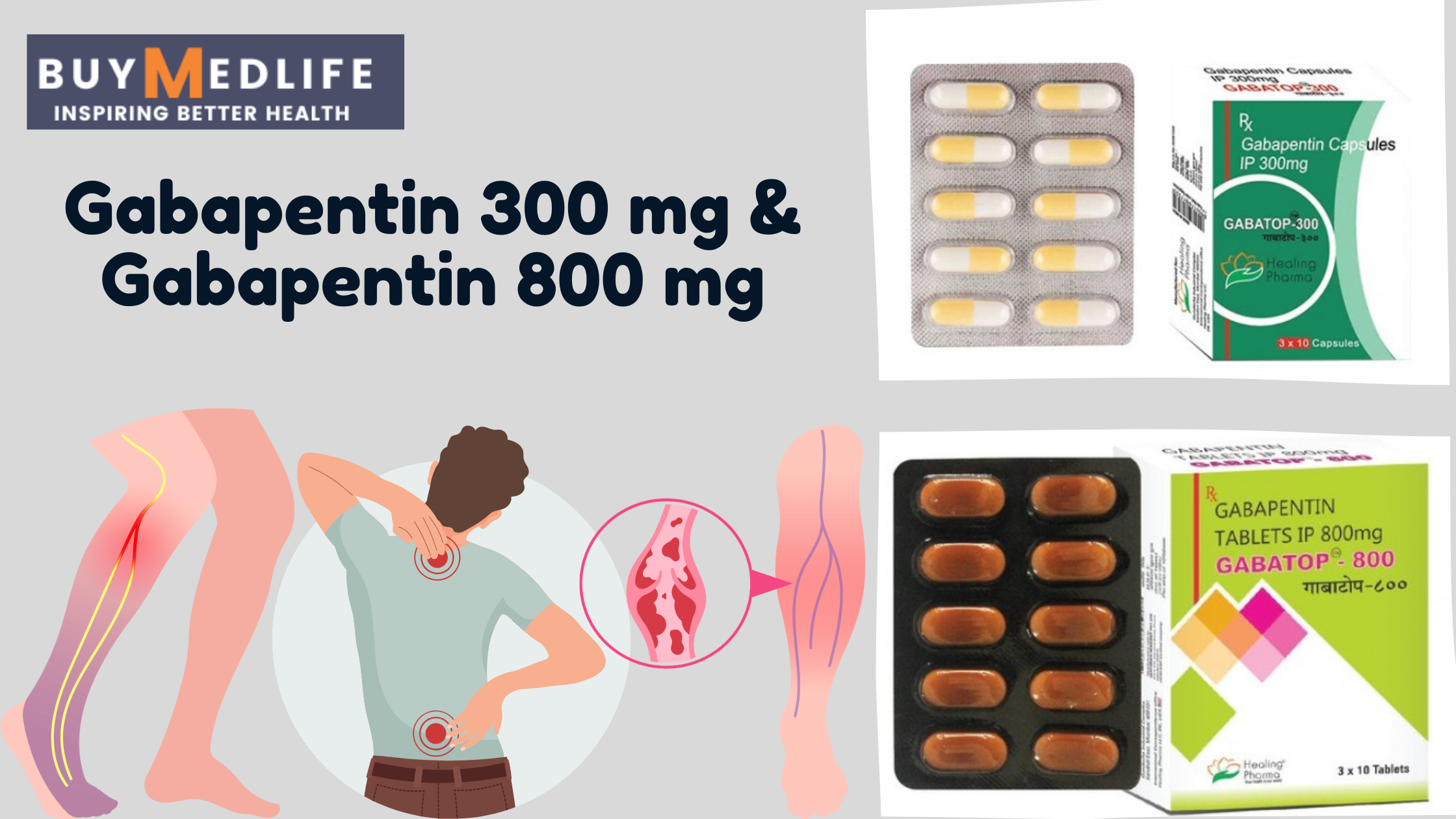When it comes to managing complex conditions like nerve pain and epileptic seizures, there is no one-size-fits-all treatment. Among the most widely used medications for both conditions is Gabapentin, available in different dosages—most commonly Gabapentin 300 mg and Gabapentin 800 mg. Choosing between them can feel overwhelming, especially without clear guidance. This article breaks it down simply to help you understand how each dose works and how doctors personalize treatment for the best results.
Understanding Gabapentin
Gabapentin is a prescription medication classified as an anticonvulsant or antiepileptic drug, but its benefits extend far beyond seizure control. It is frequently prescribed to manage neuropathic pain—a chronic nerve-related pain that often resists traditional medications.
Gabapentin does not act directly on pain signals or seizures but modifies how nerve cells transmit messages to the brain. It helps quiet overactive nerves, easing symptoms like burning, tingling, sharp pain, and uncontrolled electrical activity in the brain that can cause seizures.
Gabapentin 300 mg: A Gentle Entry Point
Gabapentin 300 mg is typically considered a low-to-moderate starting dose, especially for individuals who are new to the drug or have mild symptoms. It allows healthcare providers to introduce the medication gradually, reducing the risk of side effects.
Why start with 300 mg?
-
Ideal for mild nerve pain or early seizure management
-
Suitable for older adults or patients with sensitive systems
-
Lowers risk of side effects like dizziness or fatigue
-
Can be taken once or multiple times daily based on need
In many cases, doctors start with one dose of Gabapentin 300 mg at night, then slowly increase to 2–3 times a day as the patient’s tolerance and condition allow.
Gabapentin 800 mg: Higher Dose, Higher Impact
On the other hand, Gabapentin 800 mg is considered a high-strength option. It is often prescribed when lower doses fail to provide adequate relief. This dose is used more frequently for moderate to severe neuropathic pain or for patients with chronic seizure disorders.
Who might need 800 mg?
-
Individuals with advanced or persistent nerve pain
-
Patients who require stronger seizure control
-
People who have built up tolerance to lower doses
Because Gabapentin 800 mg is more potent, it’s usually introduced after titration through smaller doses like 300 mg or 600 mg. It may be taken two to three times a day under a strict medical schedule.
How Doctors Personalize Gabapentin Treatment
Gabapentin dosing is not a one-size-fits-all formula. Doctors personalize the dosage based on several key factors:
-
The condition being treated (pain vs. seizures)
-
Patient age, weight, and kidney function
-
Response to previous doses
-
Other medications being taken
Your doctor may start you on Gabapentin 300 mg and gradually increase your dose until symptoms are well controlled. If needed, the dose may be raised to Gabapentin 800 mg or even beyond, depending on how your body responds.
Side Effects: What to Expect at Each Dose
While Gabapentin is generally well tolerated, side effects can increase with higher doses. Here's what you might experience:
Common side effects:
-
Drowsiness or fatigue
-
Dizziness or coordination problems
-
Swelling in the hands or feet
-
Nausea or dry mouth
These are more likely with Gabapentin 800 mg, especially if the dose is increased too quickly. That’s why doctors recommend titrating the dose slowly and monitoring symptoms closely.
Important Dosage Tips
-
Never self-adjust your dose. Changes should only be made under medical supervision.
-
Take with food if you experience stomach upset.
-
Stay hydrated and avoid alcohol while on Gabapentin.
-
Do not stop suddenly, as this may trigger withdrawal or seizures.
Which Dose Is Right for You?
The right dose—whether Gabapentin 300 mg or Gabapentin 800 mg—depends on your unique health profile and how your body responds to the medication. It’s not about which dose is “better,” but which one is safer and more effective for your needs.
Gabapentin is often part of a step-by-step treatment plan, starting low and building up. If your symptoms are mild, you may do well with just 300 mg. If they’re more persistent, your doctor may recommend increasing to 800 mg over time.
Conclusion
Gabapentin is a flexible, effective medication used for treating both nerve pain and seizure disorders. Whether you're prescribed Gabapentin 300 mg or Gabapentin 800 mg, the goal is the same: personalized relief that fits your symptoms and lifestyle. With proper dosing and medical supervision, Gabapentin can significantly improve your quality of life and give you better control over chronic conditions.



